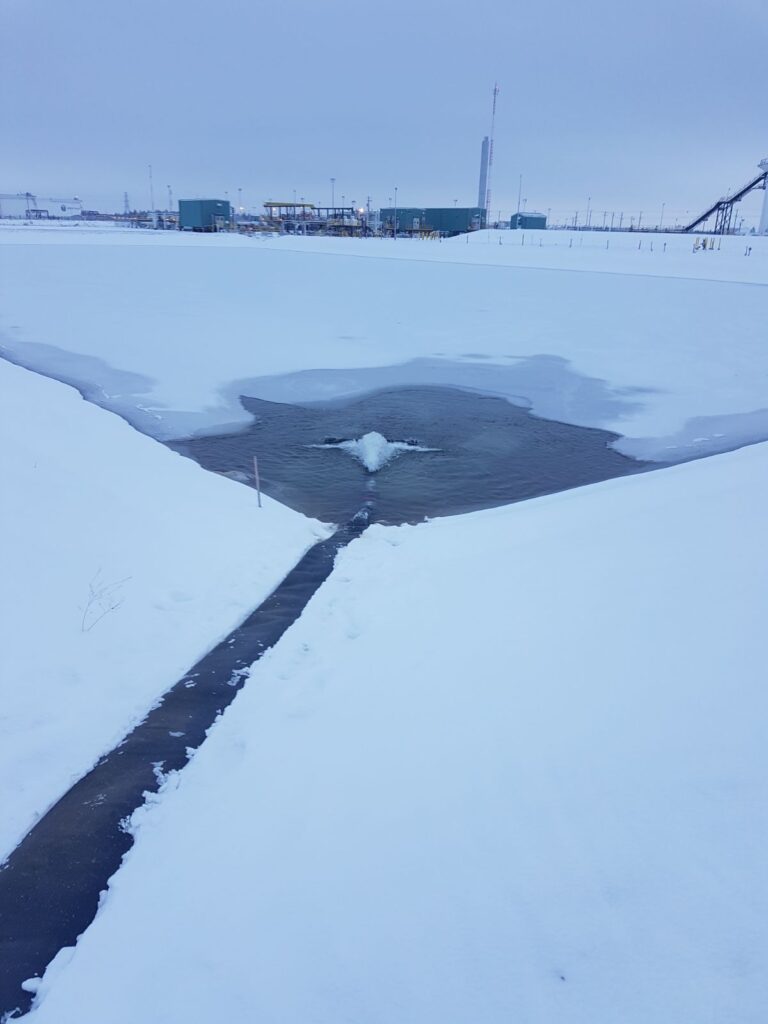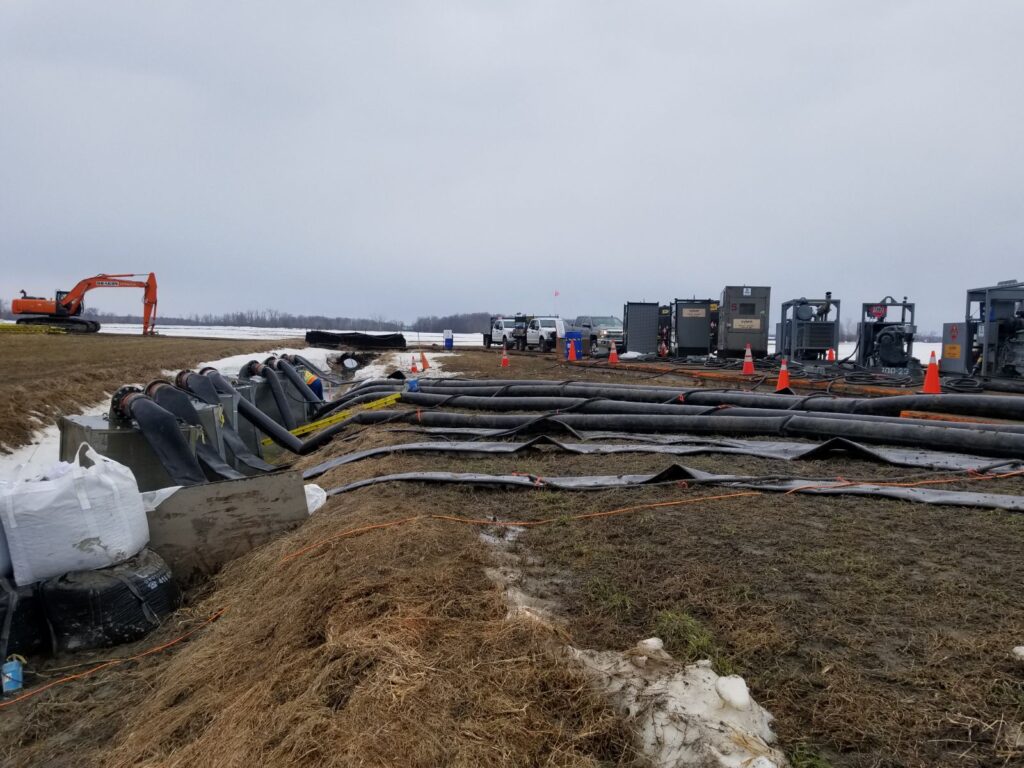Services
River Diversion | Creek Bypass
Temporary diversion methods such as River Diversion or Creek Bypass are used to redirect water from a stream or river and focus the flow to a designated portion of the river or creek to allow for construction activities to take place in a specific section of the water body.
This can be projects such as integrity digs, pipeline installation or associated bank protection. As well, temporary diversion projects can often be deployed during the construction of detention ponds, dams, in-stream grade control structures, utility installation, including maintenance, that require working in waterways.
Water transfer systems may appear simple in nature at first glance however, the real work is in the preparation, planning and execution prior to pumping hydrotest water. Canada has some of the most stringent guidelines for pipeline construction and integrity in the world and in collaboration with owners and constructors, NCS Fluid Handling Systems plays an integral supporting role in project success.
The NCS Fluid Handling Systems Designers and Engineers work closely with our clients and all government agencies to coordinate such items as fish movement activities.
Our custom pumping systems will include Department of Fisheries and Oceans-approved suction assemblies, and flexible and adaptable solutions for any terrain we may encounter.

More – River Diversion | Creek Bypass

As is the case with all NCS Fluid Handling Systems services our team, across Canada, of expert designers and engineers develop procedures with a detailed analysis of the site-specific, topography, flow patterns and water management requirements. The NCS team developed an in-depth “Engineered Diversion Plan” also known as an “Engineered Bypass Pumping Plan” that includes a job-specific overview, considering all project details. These Engineered plans consider the flow of rivers or creeks, the groundwater conditions, genotypical patterns and any tidal or tributary water flow changes, along with all fish and wildlife regulatory requirements and the appropriate filtration, methods of treatment and discharge criteria.
The NCS engineered pumping plan will consider redundancy for critical equipment such as both primary and standby pumping units as designed, and the engineered plan comes complete with detailed narrative as well as comprehensive AutoCAD format drawings of the overall system, NCS Fluid Handling Systems has always viewed our services and support as a part of a partnership with our clients success in mind and works in collaboration with al stakeholders ensure the project’s scope is achieved safer, on time and on budget, with our focus on proper care and custody of the water during operations.
NCS Fluid Handling Systems designed diversion or bypass pumping systems incorporate Department of Fisheries and Oceans (DFO) approved inlet screens and suctions, that are predetermined on site-specific project reviews and are incorporated into the engineered plan, and any replacement and redundancy built in, in the event conditions change.
When needed NCS designers ensure that all stakeholders are contacted and that a clear open line of communication is agreed upon and adhered to for the temporary water supply line crossing over surface land, utilities and that compliant crossing access equipment and agreements are in place and a part of the design execution plan.
NCS has always believed that our business is about moving water and fluids and that we take this responsibility of care and custody of industrial utilized water seriously and while the process of moving, diverting or transferring water may appear to be easy at times the reality is that there is many situations and regulations that need to be considered in all designs and permitting. That’s why NCS deploys the best people in the industry to review all the preparation, planning, and execution prior to any transfer or pumping of fluids or water prior to a diversion or creek bypass. Canada has some of the most rigid standards around environmental handling of water and to manage the risks our clients have learned that they can mitigate the risk by working with the entire design and operations team at NCS Fluid Handling Systems.
Our technical capabilities and technical designers are constantly training our new processes, system components and technical breakthroughs to enhance overall project management. Our teams also focus on value-added equipment such as:
Ark Flood Water filled Coffer Double dams and Triple dams
Drive on and Drive off Spill Containments
Flow meters and constant flow monitoring with remote link-up and full-time reporting, ensuring TSS or constituent levels are within the allowable discharge criteria.
Our project management teams can assist in customer arrangement of the Temporary Diversion License (TDL) and ensure that all water handling activities comply with the TDL requirements such as returning the water cleaner than originally taken and all water metered and returned in accordance with the TDL.
If the diversion or inlet system is supplying a hydro-testing project additional code requirements are added to the designed execution plan and any additional water treatment or water filtration systems are in place prior to filling operation begin. Since NCS Fluid Handling Systems provides dewatering, diversion, bypass and hydro-testing services year round and incorporates industrial water heating systems NCS will integrate water management systems to adjust water temperature to avoid temperature shock to aquatic life or vegetation, before the test water is released. Our DFO compliant inlet suction systems incorporate sell cleaning rotating screens preventing harm to aquatic life while maintaining the screens free of vegetation during filling operations.
At all times our systems operators maintain a clean and safe work site and adhere to the strictest of industry guidelines for safe work on or near water and pumping systems, some of these safety procedures are the mandatory use of life jackets, safe watercraft operations training, whips checks on water lines to name a few.
